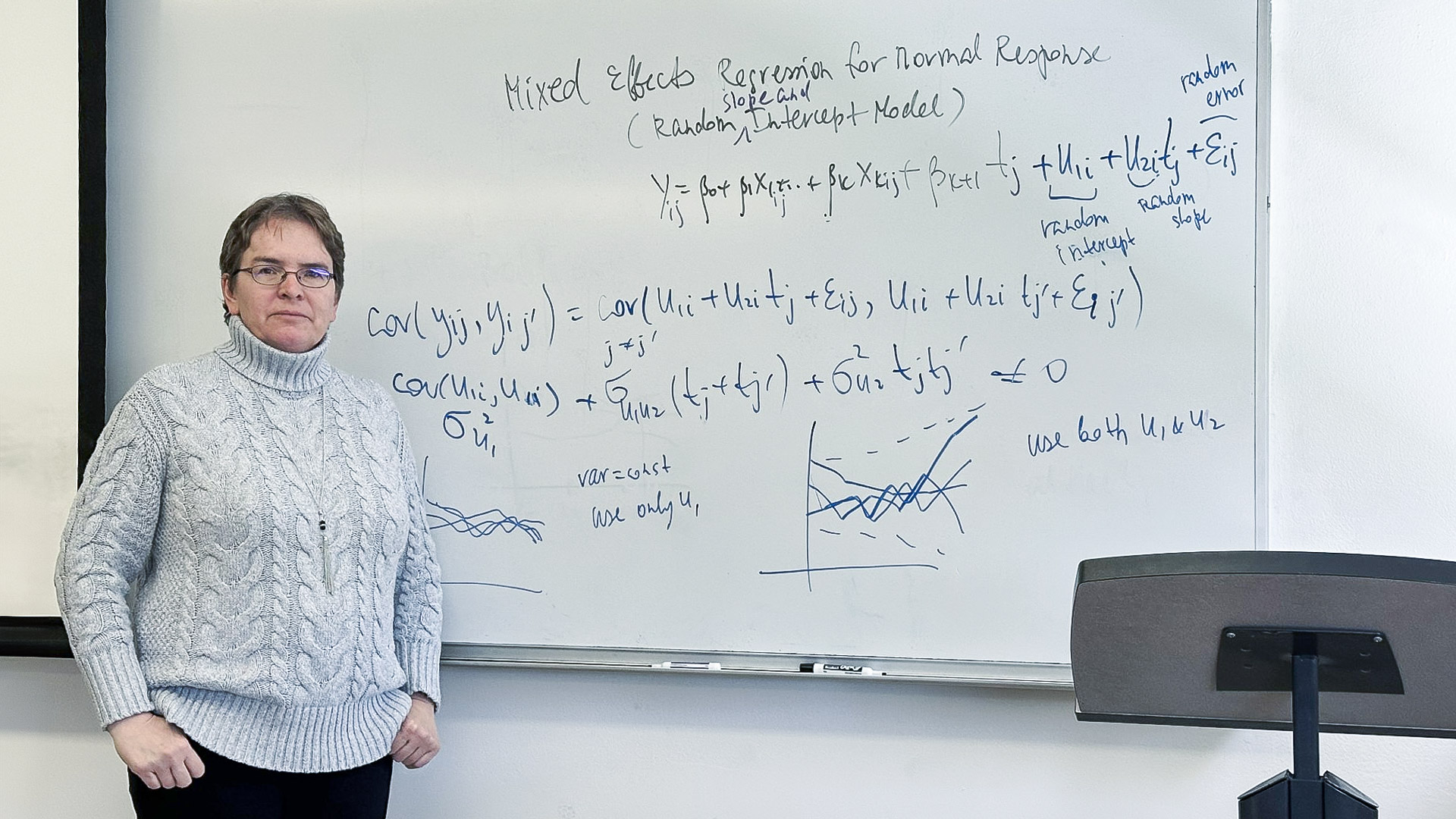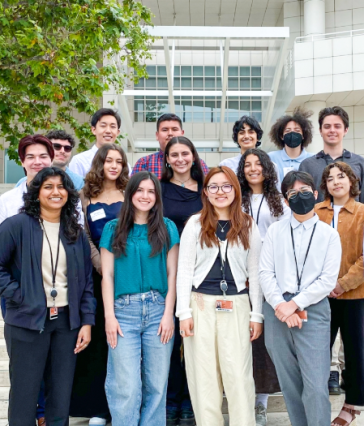CSULB's statistics professor explores math's infinite delights on Pi Day
Let’s say you just brought home a 9-inch chocolate cream pie from Hof’s Hut. Lucky you.
The first thing you do is slice the pie into eight equal pieces. You are very good at this, so they are exactly the same size — each piece cut at a perfect 45-degree angle. Great! Let’s eat.
But hold on. Let’s say you're not very good at this, and you need to use a tape measure around the circumference of the pie to determine where to make those slices so that each is exactly the same. Bad news. You’re never going to eat that pie.
That's because even though it’s possible to calculate the precise width of those eight pieces using a tape measure (approximately 3.53 inches, for the record), you will never do it. You could spend the rest of your life and the rest of the life of the universe adding trillions and trillions of digits to that 3.53 — and you will never reach the end.
You can thank pi for that. And this is the day to do it.
Fifteen years ago, Congress passed a resolution officially recognizing March 14 as National Pi Day. A strange mathematical phenomenon whose actual value is an approximation of 3.14, π is as mysterious as it is useful, which is why people celebrate it every March 14 — 3/14. Get it?
But what the heck is pi, why do math lovers geek out on it so much, and what is CSULB doing to mark the occasion? These are among the questions we posed to Olga Korosteleva, a statistics professor in the College of Natural Sciences and Mathematics.

In the simplest terms you can muster, what is pi?
If a circle has a diameter of one inch, the length of the circumference of that circle is π inches.
How many digits of pi have been calculated so far?
Supercomputers have calculated trillions of digits of pi, but interestingly enough, scientists claim that only the first 39 decimal places in pi are needed to compute the length of anything that exists in our universe. For example, in 1630, mathematicians calculated the circumference of the observable universe with an error smaller than the diameter of a single atom of hydrogen and they needed only 39 digits of pi to do that.
Do you have plans for Pi Day?
When Pi Day falls on a Saturday (like it was in 2020), we schedule CSULB’s Math Day at the Beach — a tough, high-school math competition (held in commemoration of its founder, Professor Kent Merryfield) — on that day. We will have to wait until 2026 to schedule it again on Pi Day.
Have you ever heard the song ‘Pi’ by Kate Bush, in which she sings 117 digits of π?
I haven’t listened to the song, but I know 100 digits of pi, and I kind of always knew them. It is a good memory-training exercise. Some people have memorized 25,000 digits of Pi. I am pretty sure they are normal people living among us.
What’s up with the symbol?
Pi is represented by the Greek low-case letter π and is derived from the first letter of the Greek word for circumference περιφέρεια /periferia.
Some people have memorized 25,000 digits of pi. I am pretty sure they are normal people living among us.
If any number can be found in pi somewhere, what are the chances I’d find my social security number among the digits that have been calculated so far?
There is a website “Am I in a Pi?” where you can enter your birthday (typically with a two-digit year), and the site returns the starting position of the sequence. For instance, my oldest son was born on January 24, 2004, so if I try to enter “12404”, the site tells me that this string can be found in pi starting at position 35,066. However, if I try “01242004,” no such string of numbers exists. They are checking only the first 1,254,543 digits, though. If they could upgrade this site to the known 62 trillion digits, we would be able to find the entire digitized "War and Peace" in there, as well as your social security number.
Pi comes up in art, music, science, and engineering. What is an example of a practical application of pi?
Pi appears anywhere where there is something circular. The shapes of sound waves, semi-circular movements of a pendulum and DNA spiral all have pi in them. Once someone attempts to compute the length of those circular shapes, pi is bound to appear.
Name your favorite fun fact about π.
A fun fact is that besides Pi Day, a much smaller group of enthusiasts celebrates Pi Approximation Day on July 22 because pi is typically approximated by 22/7.

















